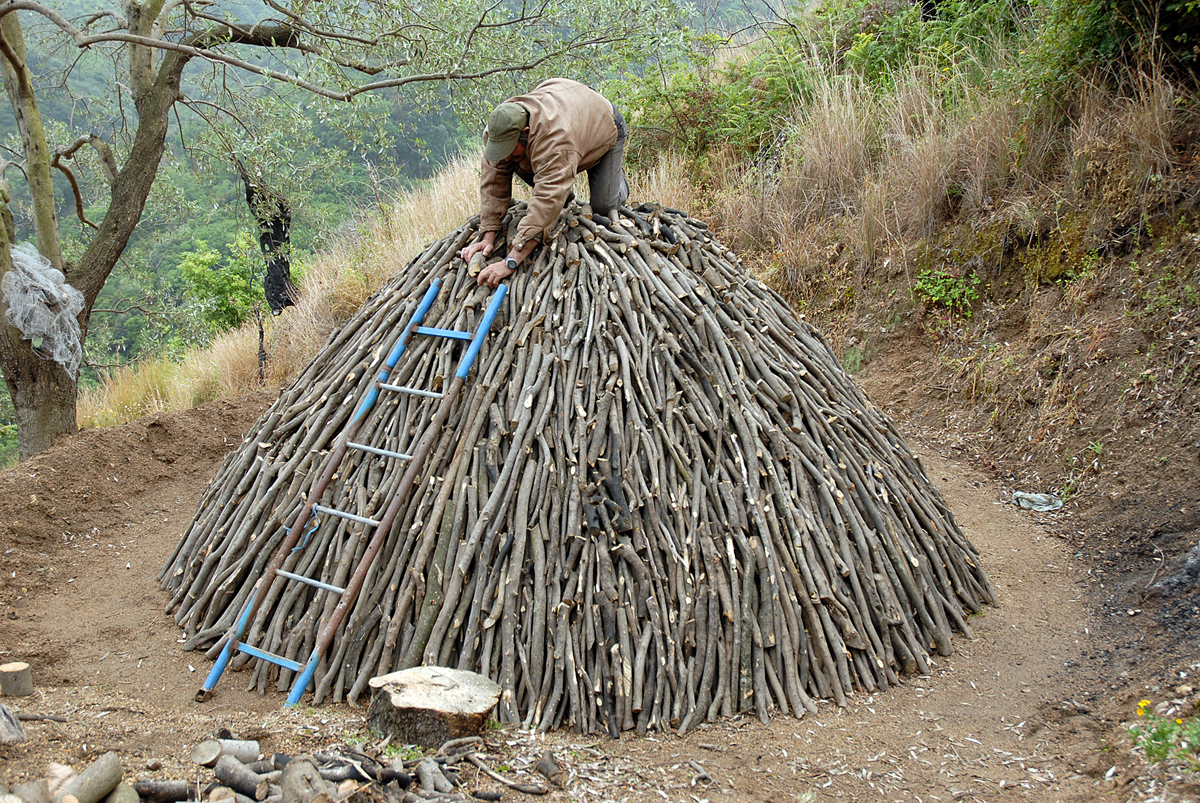On the trail of the last charcoal burners of Serra San Bruno
Visit to the "scaràzzi", the last active charcoal kilns, surrounded by nature and ancient crafts

Living slow
Regione Calabria
Want to discover an ancient world and a dying craft? Let's set off on a journey to discover the last charcoal burners of Serra San Bruno, in the province of Vibo Valentia.
Among the dense woods of the Serre Regional Park, a few columns of smoke still rise, the last bastion of a labour that has been handed down for generations among the charcoal burners of the Serre.
Let's go and meet the families of charcoal burners in Serra San Bruno, following the traces of soot!
Serra San Bruno and the charcoal burner's trade
To get to know the last charcoal burners of Calabria up close, you have to go to the woods of Serra San Bruno, a town of ancient crafts in the Serre Regional Park. Here, among the fir trees of a centuries-old forest, the unmistakable columns of smoke rise, indicating only one thing: the presence of the last charcoal burners of Serra San Bruno. Are they silent heroes or tireless workers? Are they hermits, withdrawn like the monks of the Charterhouse of Saints Stefano e Bruno, who inhabit these same places, or are they secular guardians of a dying craft? The answers to these questions coincide! The charcoal burners of Serra San Bruno are all these things together, as they themselves confirm during a brief visit.
Up here, among the mountain charcoal kilns, known in the local dialect as 'scaràzzi', you don't arrive by chance! You reach them in the company of official guides or local people, who for years have acted as intermediaries between the charcoal burners of Serra San Bruno and the rest of the world, just as the Carthusian monks do: the parallel between the white of their tunics and the black of the soot that covers the charcoal burners from head to toe is thought-provoking.
Some of them are very young, others older (but not as old as their fatigue-worn appearance might suggest). If we ask them what it means to be a charcoal burner today, the answer is always the same: just like centuries ago, it means being holed up up here 24 hours a day, because the charcoal kiln cannot be left unattended. This is why young people, i.e. those who have not inherited this destiny in their families, are no longer interested in the trade: being a charcoal burner in Serra San Bruno is a sacrifice for the few!

What is a charcoal kiln and how does it work
Let's take a closer look at what a charcoal kiln is and how it 'spends its days', this strange mountain that burns slowly. Just like a living organism, the charcoal kiln has a life of its own: it is born the moment it is built, using impeccable technique, and slowly consumes itself. It feeds on the process of wood carbonisation, which occurs through controlled combustion in the absence of oxygen. Once the large woodpile (similar in shape to an igloo) has been built, it is completely covered with earth and straw to isolate it from the air and lit through a central chimney. From this moment onwards, once the process has been triggered, the wood must be tended day and night to turn into charcoal, which is why the charcoal burners of Serra San Bruno are 'slaves' to it.
During the weeks it takes to complete the process, the charcoal burners of Serra take turns to check the temperature and air flow through small holes. In this slow, distraction-free time, they live their unchanging daily lives, marked by the gestures of a job that no one wants to do anymore but which, as they proudly confess, still serves today to bring Serra San Bruno charcoal to global markets at competitive prices, just like other Made in Calabria products, which are in demand and appreciated all over the world.

Not to be missed in Serra San Bruno
A small capital of the Serre Vibonesi and fine craftsmanship, Serra San Bruno's history is intertwined with that of the Shrine of Santa Maria nel Bosco and the Charterhouse, places not to be missed, founded by Bruno of Cologne, who arrived here from Germany around the year 1000 at the request of the Pope and Count Ruggiero il Normanno, to reconquer the territories of southern Italy that had fallen under Eastern Byzantine control. In addition to these two sacred places and the related Charterhouse Museum, a trip to Serra San Bruno is an immersive experience in the Baroque style, which dominates the churches and buildings of the historic centre.
It was the Carthusian monks themselves who populated the current town in the year 1000, which is why it is rich in churches and works of art that reflect the ancient crafts of Serra: monuments, churches and streets in local grey granite, balconies and wrought iron fixtures, finely carved wooden fixtures and furnishings, the result of centuries of experience of local carpenters, stonemasons and blacksmiths (the famous Serra School). Don't miss a stroll along Corso Umberto, the town's main thoroughfare, which is lined with some of the most important religious buildings: the Mother Church, the Church of the Addolorata (a jewel of Calabrian Baroque) and the two churches dedicated to the Assumption, in the districts of Terravecchia and Spinetto respectively.

https://calabriastraordinaria.it/en/news/on-the-trail-of-the-last-charcoal-burners-of-serra-san-bruno





